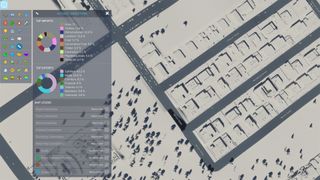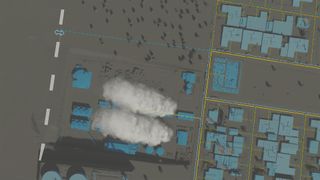Cities Skylines 2 export guide
How to export goods in Cities Skylines 2

Cities Skylines 2 export is an important source of income for your town. To create a thriving export economy, you’ll need outside connections to form export routes, including roads, train tracks, shipping routes, and airplane lines. With so many options, however, creating a new export route can be a difficult task.
Here’s how to export in Cities Skylines 2 works, from using your first outside connection to building a cargo terminal. And if you need help with some basics here's some Cities Skylines 2 tips and guide to making more Cities Skylines 2 money.
How does export work in Cities Skylines 2?

A large chunk of your Cities Skylines 2 income is the result of your export industry. Creating export products is fairly simple; you simply need to assign industrial and office zones, and all the products not used by your own town will be exported automatically as long as there’s an available export route (more on that below).
Your city’s export products will range from timber to software and food to oil. If you build a generic industrial or office zone, you won’t be able to pick and choose which products you’d like to export. However, if you create a specialised industry, such as vegetable farming or ore mining, you only get that specific resource. If you open the city economy panel or the “outside connections” info view, you can see which products your city is currently exporting.
How to create Cities Skylines 2 export routes

Creating a Cities Skylines 2 export route may seem daunting at first, but it’s mostly a matter of dragging your roads, shipment routes, or train tracks to the edge of the map. You start every new game with a single export route; the nearby highway. As soon as your industries are up and running, they will automatically start using this export route, thus generating income for your city.
When your industries start to grow and you’ve got more goods to export, there are two ways to create additional export routes:
- Buy map tiles that contain an existing export route. Some maps already have train tracks running through them, for example. If you gain access to a part of this track, you can add a cargo train terminal and use roads to connect it to your industrial zones. This is a great way to create export routes in young cities, as you don’t need to buy map tiles all the way to the end of the map.
- Buy map tiles at the edge of your map and make a new outside connection. Once your city has expanded significantly, you’ll likely be in the position to buy map tiles on the border of the map. If you create an “outside connection” all the way to the end of the map, it will turn into an export route (we’ll explain that in more detail below). The picture above shows a row of suitable map tiles, where the line in the middle can be used to create a new highway or train connection.
Cities Skylines 2 export types

There are four types of export routes in Cities Skylines 2. Here’s how to create them:
- Export by road. The highway connection you get upon creating a new game is your first export route by road. To create more, lead a new road to the edge of the map.
- Export through a cargo train terminal. Like the roads, your train tracks must reach the edge of the map to become export routes. On top of that, you need at least one cargo train terminal (instead of a passenger terminal) and create a “cargo railway route” that leads from your cargo terminal to the edge of the map.
- Export through a cargo harbour. You can build this anywhere as long as there’s a large body of water (broad river or ocean). Just like train export, beware that you need a specialised cargo harbour, not a passenger harbour! You also need to create a seaway from your cargo harbour to the edge of the map, plus a cargo shipment route that leads through this seaway, connecting the harbour with the outside connection.
- Export by cargo airplanes. You need any kind of airport for this - not necessarily an international one, but do make sure you’ve got the “cargo terminal” upgrade. Beware that you can’t just drag your airplane routes wherever you’d like, as there are usually two or three outside connections for planes available per map. Use the cargo route creation tool to make an export route between this outside connection and your terminal, as shown in the picture above.
How to export electricity and water in Cities Skylines 2

Finally, you can export water and electricity in Cities Skylines 2. Like the export routes used for your products, the export process will start automatically once you’ve created proper outside connections. For water, this means that you need to drag a water pipe from anywhere in your town to the edge of the map, as shown in the picture above. Beware that this needs to be a separate water pipe – a road connection doesn’t work!
As for electricity, your network must lead to the edge of the map through a power line. At the start of a new game, your first map tile already has an unconnected power line that you can use to export electricity. You can also create your own electricity export connection by dragging a powerline to the edge of the map, where it will form an outside connection. If you need to connect an electric cable to a powerline, you can do so by placing a transformer station in between.
And that’s how you create Cities Skylines 2 export routes. Let’s start selling!
© GamesRadar+. Not to be reproduced without permission
Sign up to the GamesRadar+ Newsletter
Weekly digests, tales from the communities you love, and more
I’m a freelance journalist who (surprise!) kind of has a thing for videogames. When I’m not working on guides for GamesRadar, you can probably find me somewhere in Teyvat, Novigrad, or Whiterun. Unless I’m feeling competitive, in which case you should try Erangel. You can also find my words on PCGamesN, Fanbyte, PCGamer, Polygon, Esports Insider, and Game Rant.

